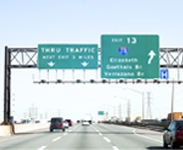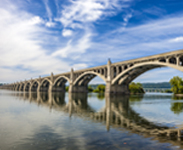The History of the Cruiser Motorcycle
Home > Motorcycle Community > Tips for Motorcycle Riders > The History of Cruiser Motorcycle
The cruiser motorcycle is one of the most popular motorcycle styles sold around the world. Virtually every significant maker of road bikes produces at least one model of a cruiser motorcycle. Some, like Harley-Davidson and Victory, almost exclusively produce cruiser bikes and their derivatives.
A cruiser motorcycle is a blend of traditional vintage motorcycle styling with modern design and manufacturing. The riding position often places the feet forward and enables you to ride seated in an upright position. Riding while seated upright is not the most aerodynamic way to ride, but it can be very comfortable. Find out more about the history of the cruiser motorcycle below.
Early Bikes and Brands that Paved the Way for the Cruiser class
Harley-Davidson, Indian, and BMW are some of the oldest and most-respected motorcycle manufacturers on the planet. The brands also have helped to create the template for the modern cruiser class with some help from other competitors like Excelsior-Henderson, Vincent, and Triumph.
The motorcycles had good power-to-weight and were reasonably rugged and reliable. And Harley-Davidson dominated the World War II years by producing a 750cc bike that became a military class.
The W750 had a solo saddle, rigid frame, and a springer front suspension. It was easy to maintain, produced in large numbers, and sold to the U.S. military. Following the war, it was the motorcycle that many veterans and other riders bought as surplus bikes for very affordable prices.
The W750 was easy to modify and gave rise to the chopper, which earned its name by owners chopping off damaged bits so that they could keep riding. Got a dent in the front or rear fender? Just cut it off and ride with the chopped version.

Easy Rider and the Emergence of the Cruiser
Many motorcycle historians credit the classic 1969 film Easy Rider for creating what soon would become the cruiser class of motorcycles. The Captain America bike in particular lead the way with a raked and extended front end, ape hanger handlebars, fishtail exhaust pipes, and a tall sissy bar in the back.
A couple of years later, Harley-Davidson’s 1200cc FX Super Glide generally is credited as being the first dedicated cruiser produced by a motorcycle manufacturer. Its debut in 1971 helped to keep the company viable for a while longer after its dubious merger with the AMF Corporation.
The FX Super Glide looks very much like a current-edition 1200 Sportster, but with a more café racer-like rear end and stepped saddle. But the fuel tank, handlebars, forks, and exhaust all set the standard. The traditional 45-degree V-twin engine and side air cleaner rounded out the look and proved to be a popular motorcycle.
Harley Focuses on Cruiser Motorcycles
Competition from the Honda CB750 and other high-quality Japanese motorcycles made the Harley and AMF partnership a short-lived one. Yamaha, Suzuki, and Kawasaki produced some very potent and fast bikes that eventually became known as the universal Japanese motorcycle – UJM to many enthusiasts.
Harley’s lead designer Willie G. Davidson decided to focus on making a series of factory customs that would establish the cruiser class of motorcycle. The Super Glide, Wide Glide, and XLS Sportster Roadster helped to define the traditional cruiser in 1982. They are very similar to today’s Harley-Davidson cruisers, and the Japanese manufacturers took notice.
The Suzuki Intruder and Kawasaki Vulcan would become some of the first V-twin motorcycles produced by the big four Japanese brands in the mid to late 1980s. Honda and then Yamaha likewise joined the cruiser craze with their own V-twins. The cruiser class remains very popular four decades later.
Find out more information about cruisers and how you can insure them through Rider Insurance today!
Plymouth Rock Assurance® and Plymouth Rock® are brand names and service marks used by separate underwriting, managed insurance, and management companies that offer property and casualty insurance in multiple states pursuant to licensing arrangements. Motorcycle insurance in New Jersey and Pennsylvania is underwritten by Rider Insurance Company. Each company is financially responsible only for its own insurance products. Actual coverage is subject to the language of the policies as issued by each separate company.





